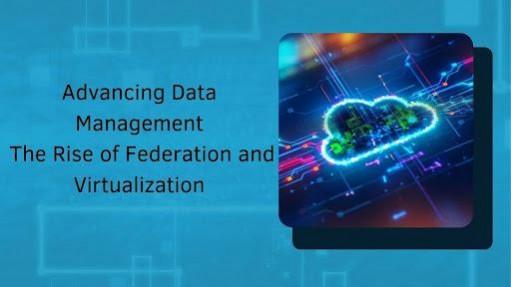
In today's fast-paced digital landscape, data management is evolving to address the increasing demands for real-time access, efficiency, and security. Traditional approaches such as Extract, Transform, Load (ETL) are proving insufficient for managing large-scale, distributed datasets. As a result, enterprises are turning to innovative solutions for seamless data integration. Vikas Nelamangala, a recognized expert in data technologies, examines these advancements in his latest work, shedding light on emerging trends that are transforming modern data strategies.
The Shift from Traditional ETL to Data Federation
Data integration has long relied on ETL processes, but these methods struggle with real-time analytics and increasing data complexity. Organizations face challenges with data latency, high integration costs, and inefficiencies in managing large-scale datasets. Recent advancements in data federation offer a solution by allowing seamless access to diverse data sources without the need for physical movement. This approach eliminates redundancy, reduces storage costs, and accelerates data retrieval.
Unlocking the Potential of Data Virtualization
Data virtualization is revolutionizing how enterprises interact with their information. Unlike traditional models, virtualization provides a unified data view without duplicating information. This enables faster query execution and real-time insights, streamlining decision-making processes. Enterprises implementing virtualization have reported improved operational efficiency, with query response times increasing by more than threefold compared to conventional methods.
Building a Stronger Technical Architecture
Modern data federation systems integrate structured databases with cloud storage and on-premise solutions, ensuring smooth data flow across hybrid environments. A crucial component of this architecture is metadata management, which enhances data discovery while minimizing errors. Security frameworks also play a vital role, in ensuring compliance with evolving regulations while maintaining seamless access.
Overcoming Challenges in Data Integration
Despite its benefits, implementing data federation presents challenges such as schema alignment and performance optimization. Organizations must navigate inconsistencies in data formats and security requirements. Emerging AI-driven solutions are mitigating these challenges by automating schema mapping and improving data governance. Additionally, caching mechanisms and workload distribution enhance system performance, ensuring real-time insights without compromising security.
The Future of Hybrid Architectures
Hybrid architectures blend virtual and physical data integration to enhance performance while controlling costs. By optimizing query latency and resource allocation, they ensure efficient data processing. Selective materialization allows enterprises to store and retrieve frequently accessed data quickly, reducing redundancy and improving storage efficiency. This approach enables businesses to achieve scalability, flexibility, and seamless data accessibility.
Edge Computing: Bringing Data Closer
Edge computing is revolutionizing data processing by bringing computation closer to data sources, significantly reducing latency and enabling real-time decision-making. This shift is especially critical for industries relying on IoT devices, such as healthcare, manufacturing, and autonomous systems, where instant data analysis enhances efficiency and safety. By minimizing reliance on centralized cloud infrastructure, edge computing improves bandwidth usage and reduces network congestion. Additionally, it strengthens data security by keeping sensitive information localized, decreasing exposure to cyber threats. As businesses increasingly adopt edge computing, it is becoming a fundamental pillar of modern data ecosystems, driving innovation and operational resilience.
In summary, Vikas Nelamangala emphasizes the transformative impact of data federation and virtualization on the digital landscape, empowering enterprises with enhanced control, efficiency, and security. As data needs continue to grow, these innovations will play a crucial role in shaping the future of data management. His insights illustrate how organizations can harness these technologies to maintain a competitive edge in a data-driven world, enabling seamless integration, real-time access, and strong security for long-term success.








![Sky is the limit: IndiGo is now tenth largest airline by capacity globally; growth indisputable [details]](https://data1.ibtimes.co.in/en/full/767455/sky-limit-indigo-now-tenth-largest-airline-by-capacity-globally-growth-indisputable-details.jpg?w=220&h=138)








